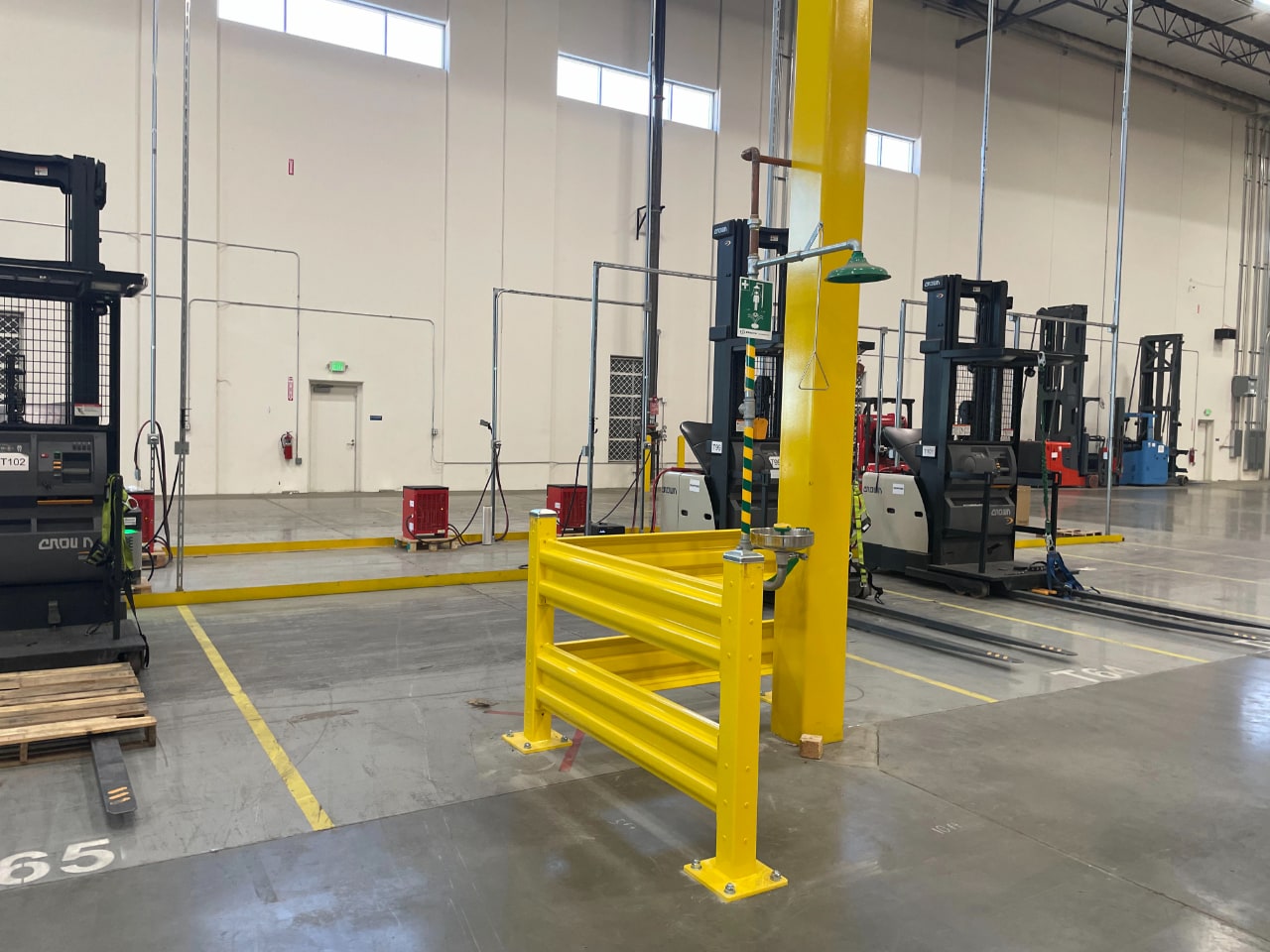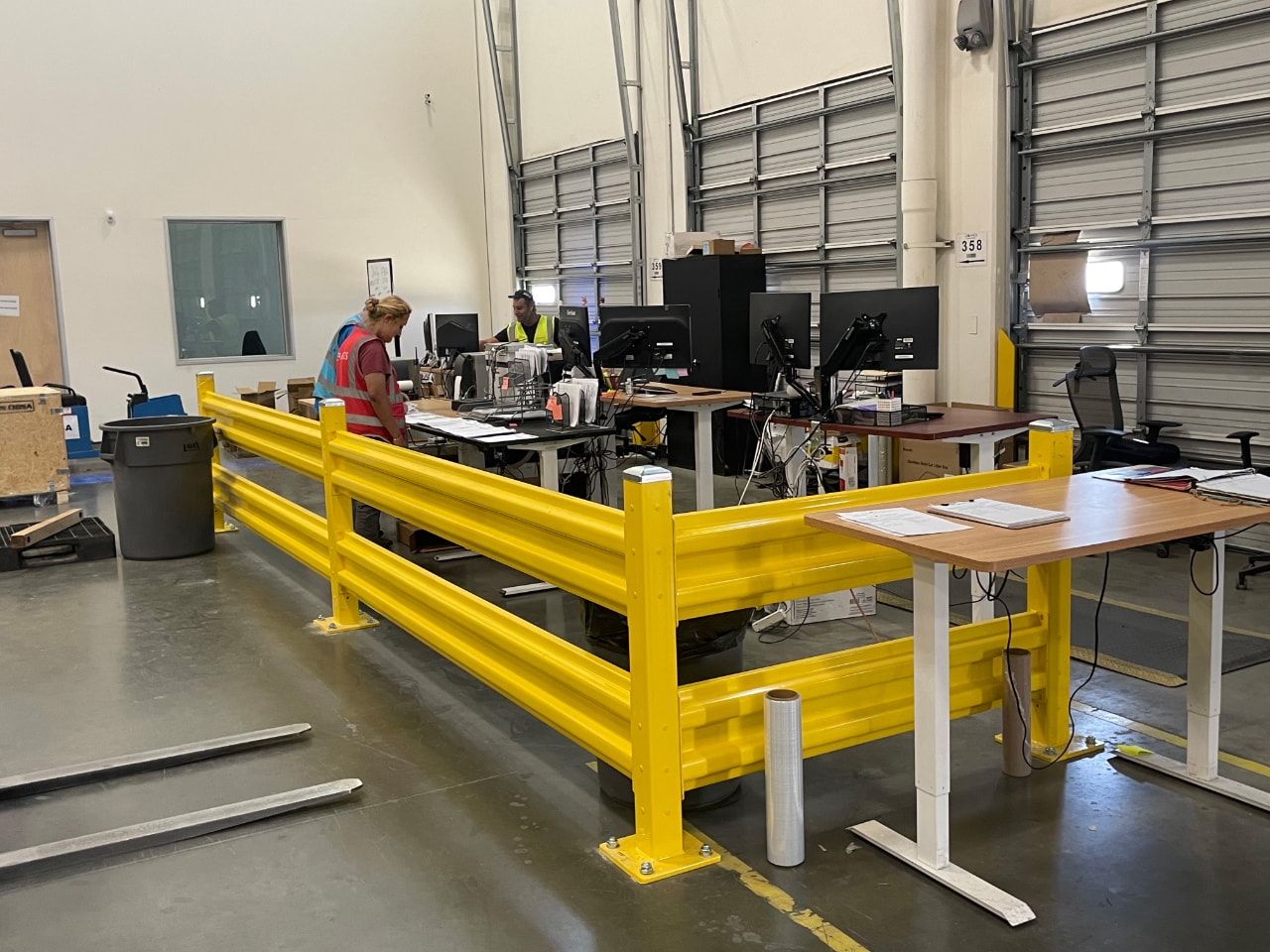Introduction: The Critical Role of Steel Guard Rails
- Modern industrial facilities, warehouses, and docks face high risks of collisions between forklifts, AGVs, and personnel, as well as fall hazards.
- Guard rails prevent major financial losses and ensure worker safety, serving as essential "safety insurance" for businesses.
What Is a Protective Steel Guard Rail?
- Industrial guard rails are made of high-strength steel to prevent vehicle impacts, falls, or entry into hazardous zones.
- Unlike highway barriers, industrial rails prioritize rigidity and minimal deformation to reduce crushing risks.
- Standard components include: steel rails (corrugated or box-beam), posts and base plates, end caps, and impact-absorbing accessories.
Core Advantages
1. Enhanced Personnel and Equipment Protection
- Effectively stops runaway forklifts and heavy material handlers, preventing severe injuries or fatalities.
- Outperforms visual markers or floor tape in confined spaces like warehouses.
2 Reduced Downtime and Liability Costs
- Installation costs average a few thousand dollars and takes hours, while accidents can incur exponentially higher losses.
3 Regulatory Compliance
- Meets OSHA/ANSI/BSI PAS 13 standards. Typical height: 42″ (±3″), withstands 10,000lb impacts at 4 mph.
4 Material Durability and Sustainability
- Constructed with 11-gauge corrugated steel, often anodized or powder-coated for wear resistance and aesthetics.
- Fully recyclable, long-lasting, and low-maintenance.
Product Specifications and Applications
Product Specifications Comparison
| Configuration | 2‑rib | 3‑rib |
| Impact Rating | 10,000 lb @ 4 mph | 12,000 lb @ 4 mph |
| Material Thickness | 12 ga steel | 11 ga steel |
| Rail Height | Approx. 12″–12.5″ | Approx. 14″–14.5″ |
| Best For | General pathways, pedestrian areas | High-traffic zones, heavy-duty aisles |
| Cost | Lower cost, great value | Slightly higher price for enhanced durability |
Post Types Comparison
| Post Type | Height | Structure | Best Use |
| Single‑rail post | ~18″ | One rail; 4¾″ × 4¾″ × 3/16″ tubing; 10″×10″×½″ base; 4-way base plate | Pedestrian separation, light-duty protection |
| Double‑rail post | ~42″–44″ | Holds two rails; same tubing & base specs | Heavy-duty aisles, forklift paths, equipment barriers |
Rail Lengths & Coverage
| Nominal Length | Actual Rail Length | Center‑to‑Center Spacing | Ideal Use |
| 5′ | ≈55″ | 60″ | Short path separations |
| 6′ | ≈67″ | 72″ | Standard straight runs |
| 8′ | ≈91″ | 96″ | Typical aisle closures |
| 10′ | ≈115″ | 120″ | Wide aisles or warehouse lanes |
Selection Guide
- Light-duty zones (pedestrian walkways, office partitions): Choose 2‑rib + single‑rail post + 5′/6′ rail for cost-effective protection.
- Heavy-duty zones (forklift aisles, loading docks): Opt for 3‑rib + double‑rail post + 8′/10′ rail to ensure maximum safety.
- Equipment or wall buffer zones: Use 3‑rib + single or double post + 5′–8′ rail tailored to your layout.
- Temporary access areas: Use lift-out rails with 4-way posts for easy removal or repositioning.
Installation and Maintenance
1. Planning and Layout
- Install at forklift turn zones, hazardous equipment perimeters, and corners. Maintain post spacing of 4–8 ft.
2. Installation Guidelines
- Base plates: ≥10″×10″; thickness ≥½″.
- Bolt connections inside posts to avoid exposed sharp edges.
3. Routine Maintenance
- Inspect for deformations, loose bolts, and coating damage regularly.
- Repair minor damage promptly; conduct professional inspections after major impacts.
Marketing Highlights and Adoption Strategies
1. Economic ROI
- Compared to potential accident costs (e.g., $191,000 direct costs per dock incident per AutoChock data), guard rails offer rapid ROI—often recouping costs by preventing one major accident.
- Critical in high-risk zones like loading docks, where they prevent repairs, lawsuits, and production halts.
2. Industry Case Studies
- U.S. averages: 75–100 forklift-related fatalities and 34,000–62,000 severe injuries annually.
- Loading docks alone see ~7,700 incidents yearly (21/day), plus frequent near misses.🔸 Implication: Daily forklift operations carry significant accident probability.
Protective Steel Guard Rails are foundational "safety insurance." Proper selection, installation, and maintenance boost workplace culture while slashing risks and costs. This blog underscores both technical value and financial returns to accelerate decision-making.





